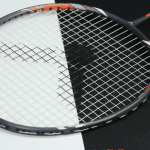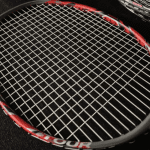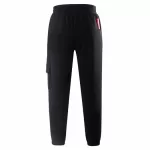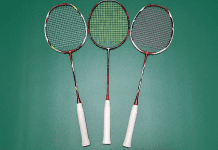
Badminton Racket Yonex ARCSABER 11 PRO Reviews
For those who are familiar with the history of YONEX racquets, the Bow Sword series will not be unfamiliar to them. More than a decade ago, the Bow & Sword series became a mainstream series that took the international circuit by storm and was loved and sought after by amateurs. Spanning the entire era of the “Four Heavenly Kings” and still occupying a place in the international arena, it can be said that the Bow & Sword series has long become an irreplaceable sentiment and unchanging classic in the hearts of golfers.
Nine years ago, in February 2013, the ARC-11, the last model of the Bowie series named after a number, was put on sale! It was the end of the legend and the beginning of the dream. For a long time after that, although more and more new series and models emerged with the continuous progress of materials and technology, ARC-11 was not buried by the latter wave, and it has always had its place in both the professional field and the amateur circle, and it can be said to have created a monumental myth.

On 25 February 2022, the dusty doors of the Bow & Sword series will slowly open once again after nine years! On 25 February 2022, the dusty door of the Bow & Sword series will slowly open once again, following a new skin in 2017! ARC-11 PRO (ARCSABER 11 PRO / Bow & Sword 11 PRO) is ready to be released after ten years of accumulation!

At the end of May 2022, Sai Ohori made her debut on the court with her new racket, the ARC-11PRO, which was the first time she picked up a Bow Sword series racket after seven and a half years, following the end of her use of the ARC-11 at the end of 2014. In the end, after a long journey through the ranks, Obori Sai managed to win the 2022 Japan Ranking Women’s Singles Championships, which made me start to really pay attention to this racquet.

To date, more than five months have passed since the official launch of ARC-11PRO, and famous players such as Shahili, Zhao Junpeng, Xie Dingfeng, and Xiao Lane have joined hands with this “new partner” to fight on the field for a long time.
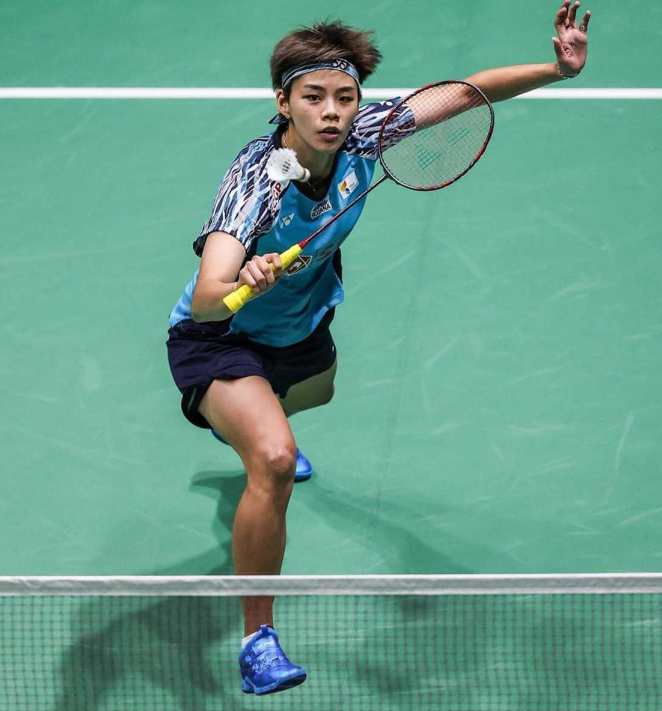
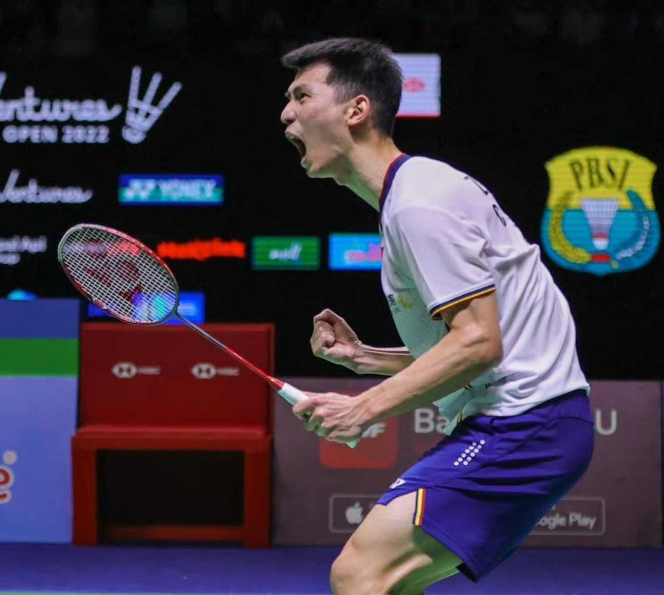


The introduction of the ARC-11PRO is the third time recently that YONEX has used the suffix “PRO” after a racquet model, following the AX-88S/D PRO and the AX-99PRO. With the name “PRO”, what kind of new experience does the ARC-11PRO have, and what are the similarities and differences with the original ARC-11?

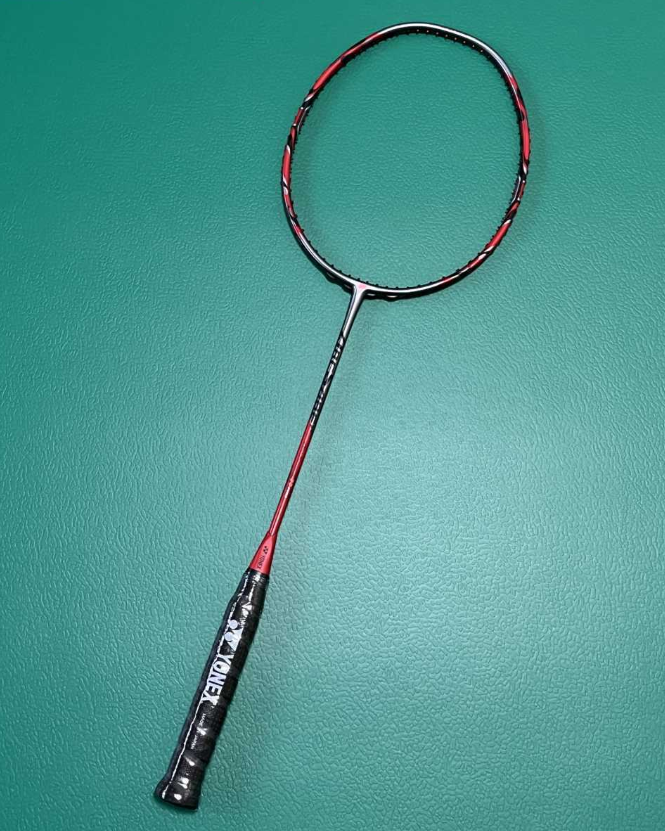
Appearance and Paint: Ultimate Retro and Simplicity
The ARC-11PRO’s body is painted in silver grey and dark red, giving it a dark look. It’s a rare design for YONEX rackets to have such a dark colour scheme, and it’s a unique design that’s not eye-catching, but it’s recognisable.


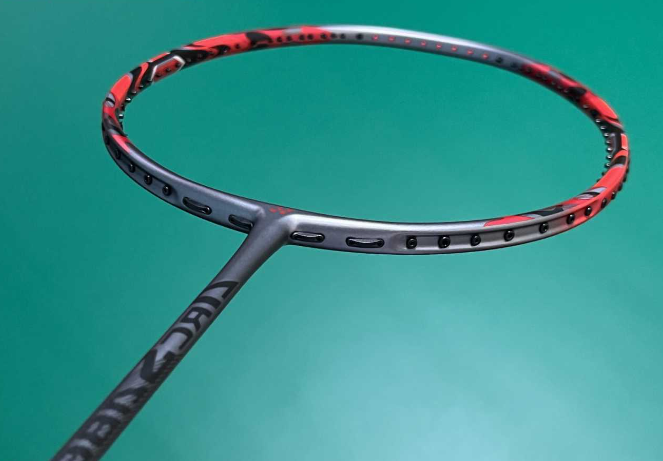
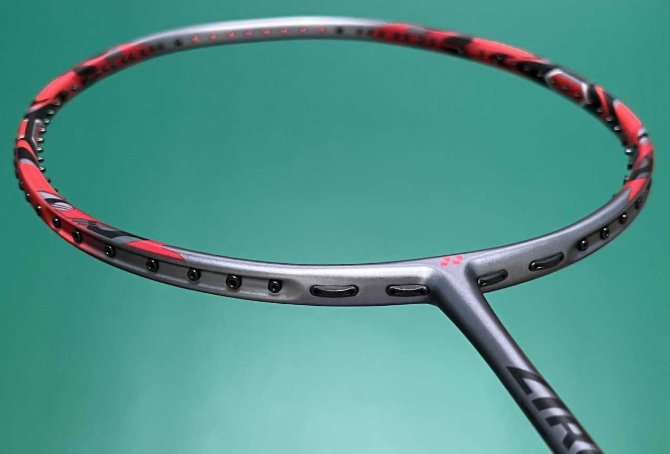
Like the Metallic Red ARC-11 (new colour), the ARC-11PRO’s frame has a left-right symmetrical design, with silver-grey dominating at the bottom and top of the frame, transitioning to a dark red on the left and right sides, and an accent pattern consisting of interwoven black and silver-white focused on the sides.

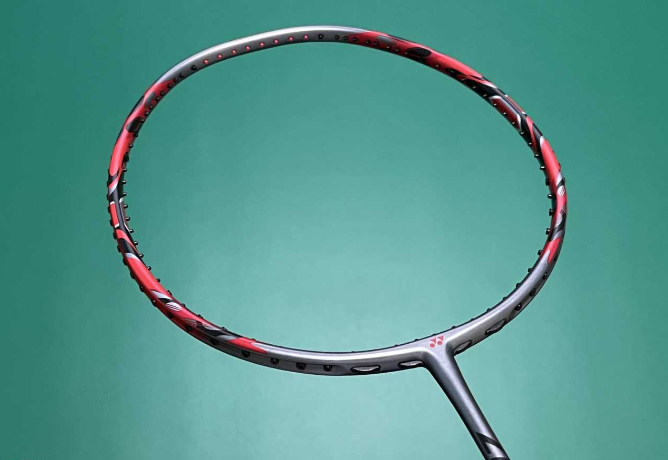


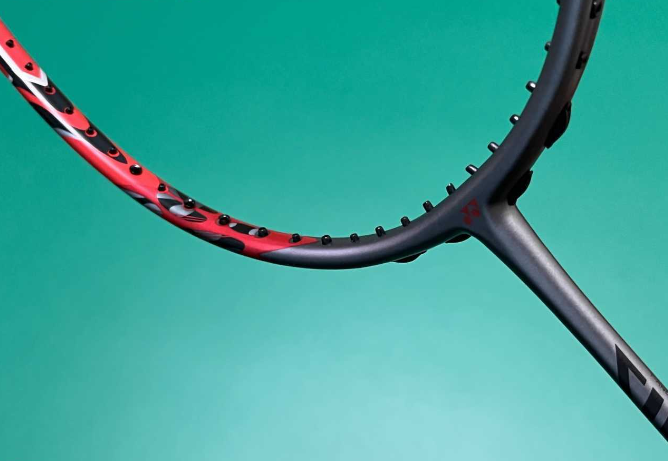
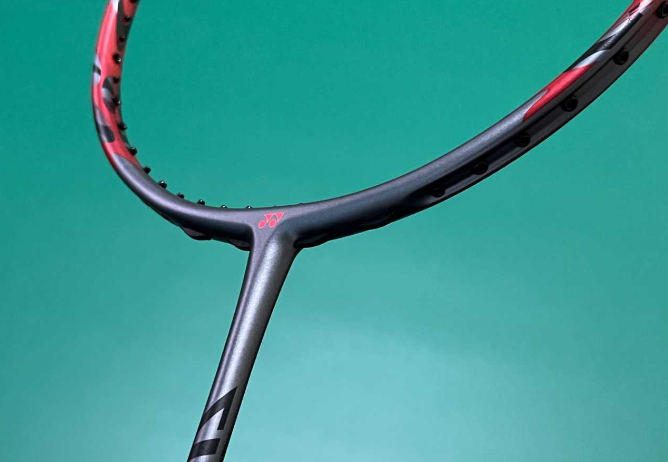


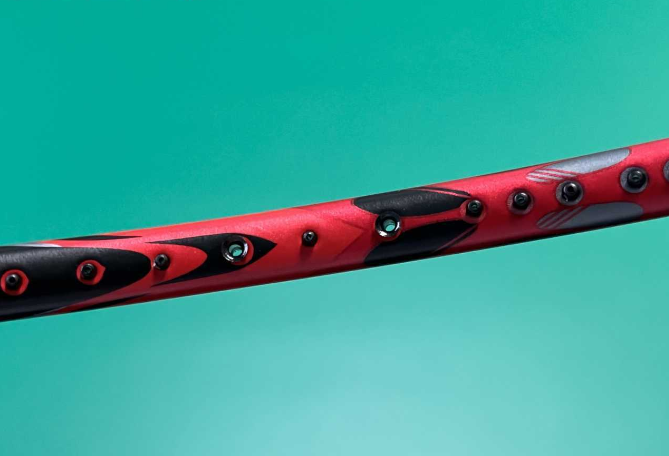
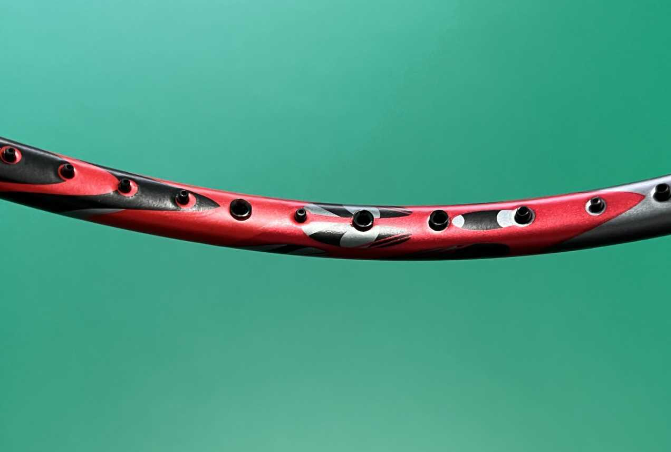





The top half of the shaft is silver grey up to the T-head and the bottom half up to the cone is dark red. The paint job on the centre stick is very simple, without too many patterns, but the black “ARCSABER” lettering on the silver-grey background of the upper half of the stick makes the whole paint job of the centre stick look very layered, which can be called the finishing touch on the paint job design of the whole racket.
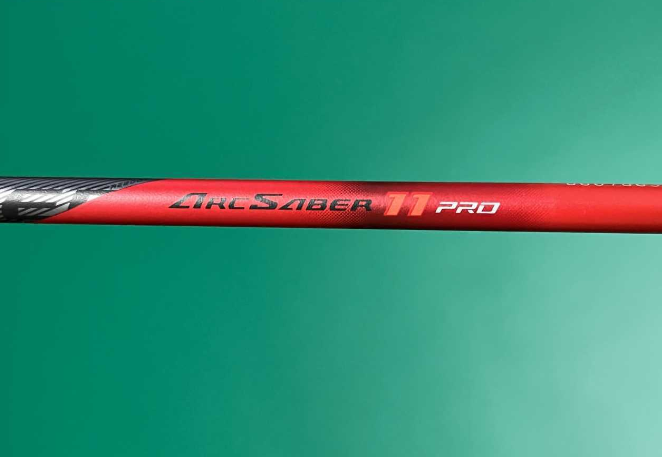


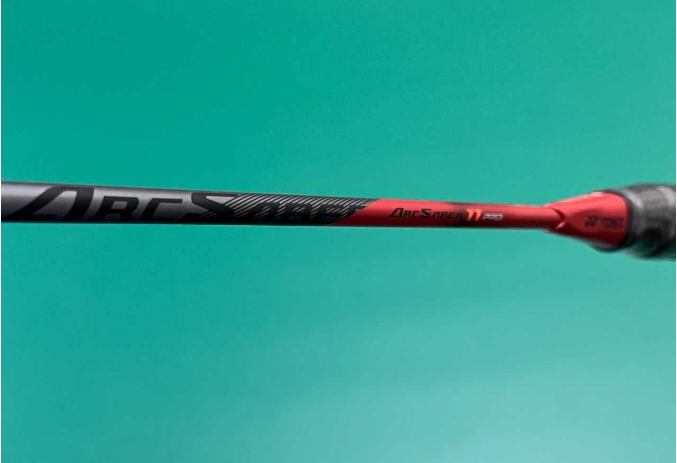
There is no gradation of colour between the top and bottom of the shaft, as there is in the frame, but this “abruptness” better emphasises the sharpness of the Bow Sword name.


Since it’s a newer generation of the ARC-11, it’s only natural to compare it with the ARC-11. What the two colourways of the ARC-11 have in common is a fresher and more beautiful paint job, while comparing the ARC-11PRO to them, despite the similarity in name, the appearance can be quite different. In comparison, the ARC-11PRO’s paint job is more minimalist, without as much detail as the ARC-11’s, and the lacquer surface doesn’t have the same starry, shimmering texture as the ARC-11’s, replacing it with a flat, matte material. If the ARC-11 focuses on youthfulness, the ARC-11PRO shows a kind of maturity and stability.



The only similarity is probably the arrow pattern on the side of the frame at 3 o’clock and 9 o’clock like the Metallic Red ARC-11 (new colour).

Finally, it is worth mentioning that, according to many ball players sunshine photos, this CH version of the ARC-11PRO with the shooter is still the same as that year’s Bow and Sword series of racket cover, can be said to be full of sentimental points. However, I got this one for the JP version, and did not come with a racket cover, instead of a velvet bag, slightly regrettable.

Parameters and Technology: Classic Heritage and Innovation
The ARC-11PRO in my hand is 3U/G5 specification, after actual measurement, the weight of the 3U ARC-11PRO empty racket (with backing) is about 87.11g, and after removing the backing, the weight is about 81.99g.


The total weight after top line (YONEX NBG-95 line, 24lbs) and hand rubber (cushioning membrane + YONEX AC102-5 hand rubber) comes to 93.72g with a balance point of about 297mm.

The centre bar of the ARC-11PRO is approximately 7.18mm in diameter.
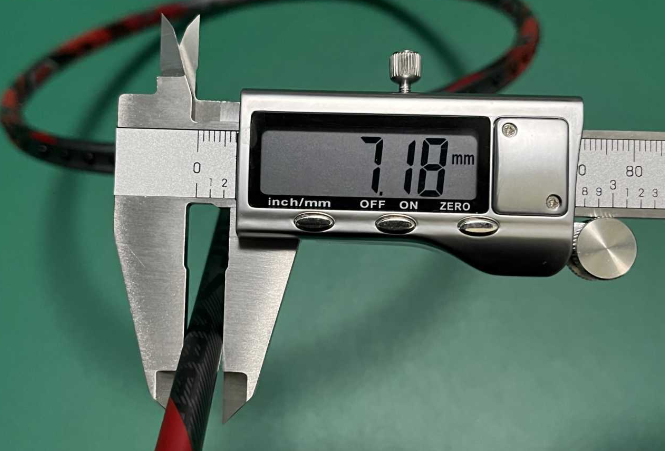
The bottom of the frame (near the T-head) is about 10.56mm wide, while the thickness is about 7.67mm.


The racket frame is approximately 9.97mm wide and 6.86mm thick on both sides (3 o’clock and 9 o’clock).


The top of the shooting frame is about 9.58mm wide and 6.49mm thick.
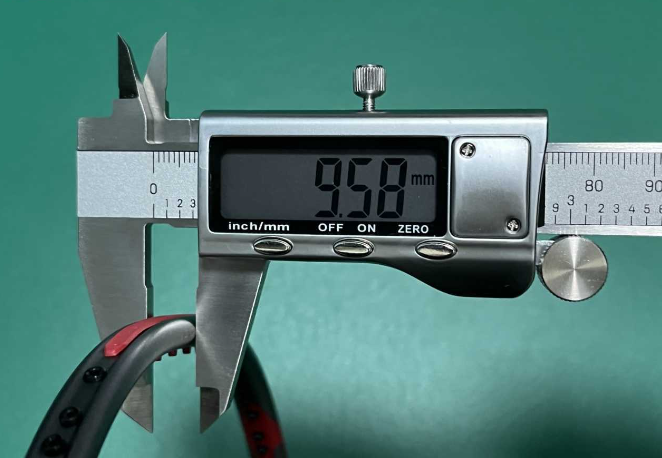

Whether through visual comparison or comparison of measurement data, it can be seen that the ARC-11PRO’s centre column and frame are significantly slimmer and thinner, and the difference can be more intuitively felt when compared with the ARC-11.


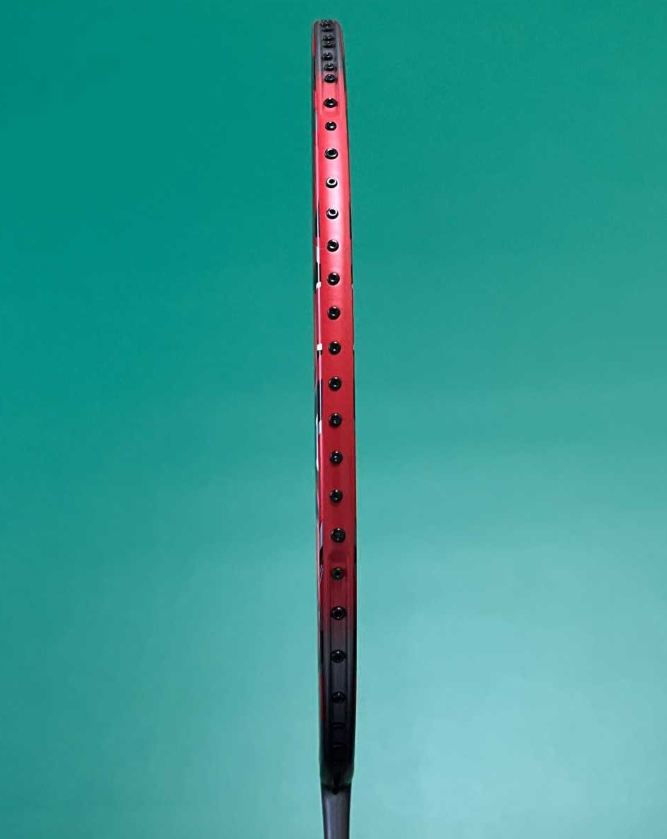
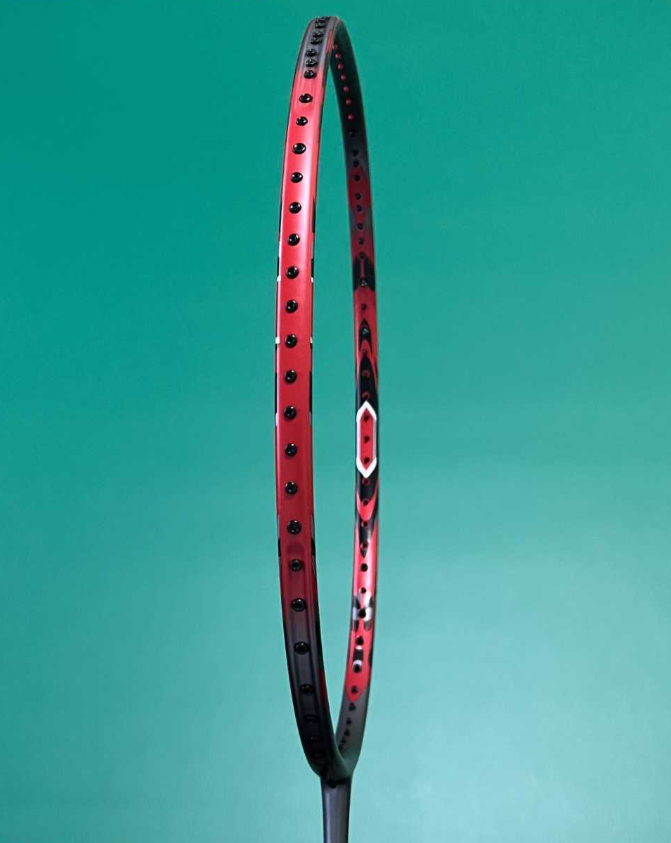

Like the ARC-11, the ARC-11PRO features a 10mm extension overall, with a total measured length of 672mm, which is consistent with both the red ARC-11 (old colour) and the metallic red ARC-11 (new colour) in my hands.
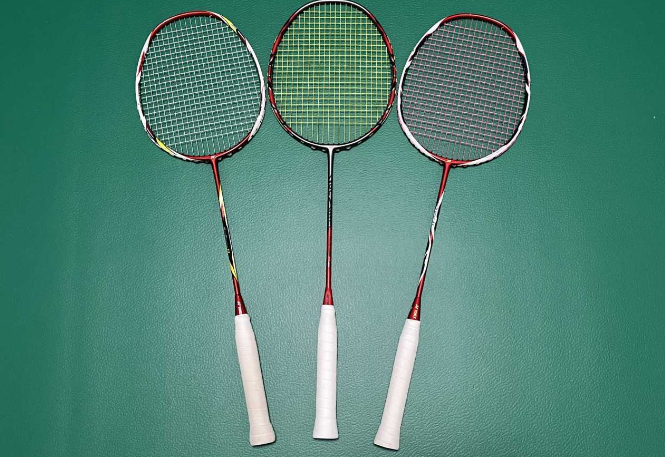
The ARC-11PRO’s handle (from the bottom cover to the top of the cone cover) is about 208mm long, the centre column (from the top of the cone cover to the lowest line hole on either side of the T-head) is about 210mm long, and the frame is about 254mm long. these three figures are identical to the red ARC-11 (old colour). Compared to the metallic red ARC-11 (new colour), the ARC-11PRO’s centre column is about 3mm longer, and the handle is correspondingly 3mm shorter.
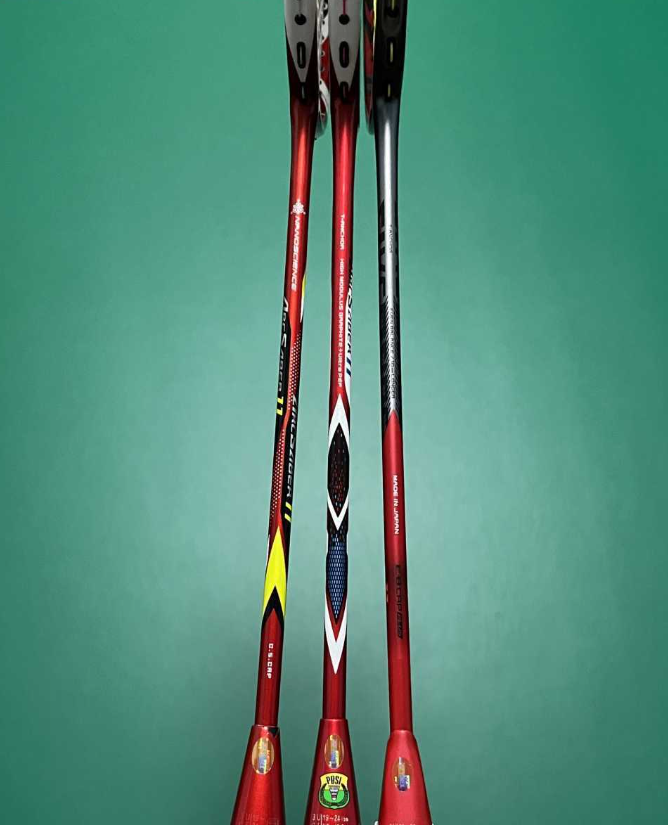

In terms of materials, the ARC-11PRO’s centre column is made of “HIGH MODULUS GRAPHITE”, “SUPER HMG” and “ULTRA PEF” super polyethylene fibres. ULTRA PEF” super polyethylene fibre.
The frame is made of “POCKETING BOOSTER” PB elastomer on top of the high elasticity carbon.

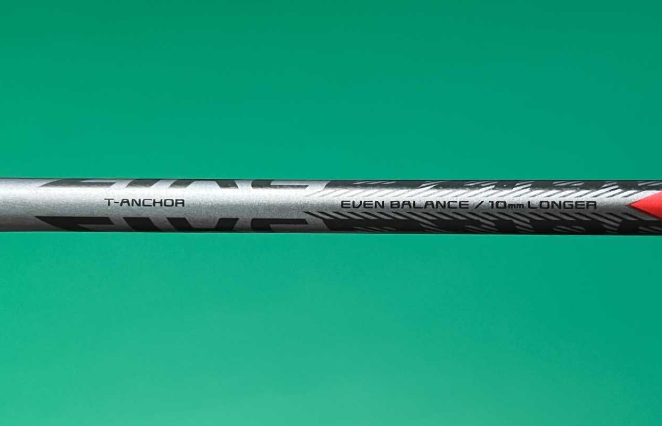
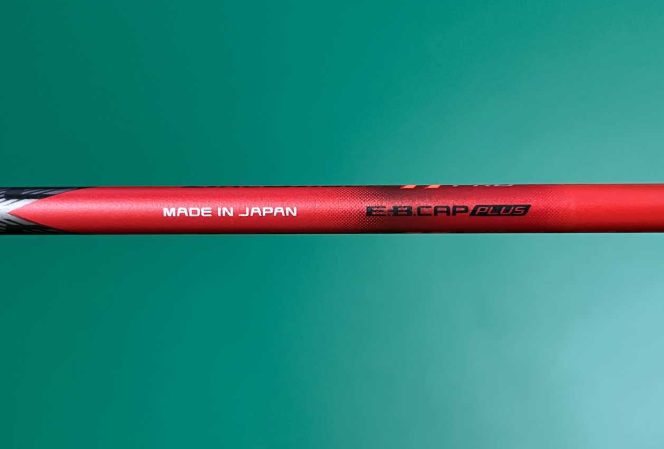
Based on the same materials used in the ARC-11, the two main innovations of the ARC-11 PRO are the addition of Ultra High Elasticity Carbon (UHC) and PB Elastomer (PB Elastomer) to the centre and frame of the racket respectively. Ultra-high elasticity carbon provides the middle shaft with higher elasticity, while PB elastomer is a special material with high elasticity and ductility, which is used in the frame not only to increase the hitting power, but also to enhance the ball retention, which has always been a feature of the Bowflex series.
In addition, ARC-11PRO still adopts the “T-ANCHOR” built-in T-joint and “ISOMETRIC” square head, which is a familiar recipe and flavour.


However, it’s worth noting that the ARC-11PRO has a larger racket face compared to the ARC-11, mainly in the fact that the upper middle portion of the frame (between 9 and 11 o’clock) is wider than the ARC-11, making the arc of this portion of the frame look a bit more rounded, and the larger face further increases the hitting sweet spot.
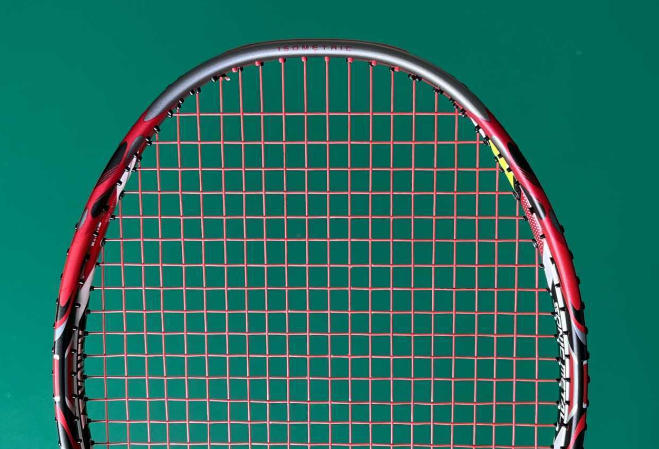

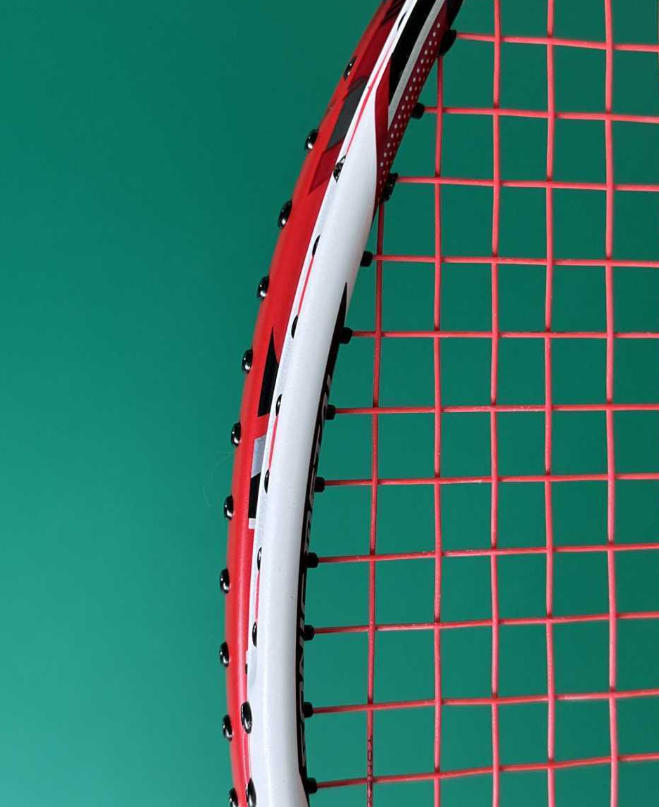
Unlike YONEX’s previous “PRO” model, the AX-99PRO, the ARC-11PRO has the same 76 cable holes as the ARC-11, with two dowel pins on each side of the T-head and a cable slot on the outside.
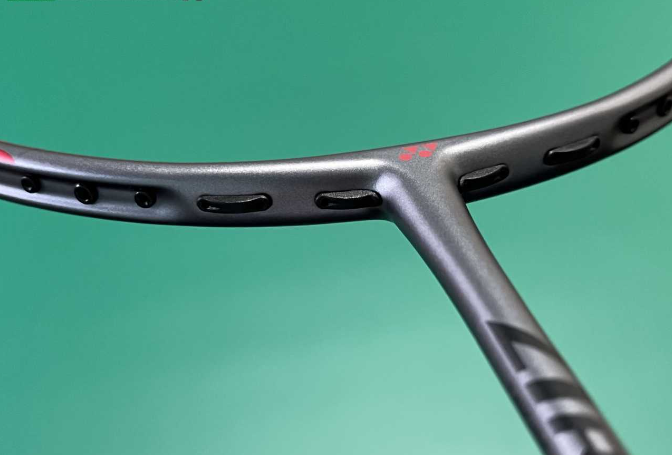
However, despite the same starting position underneath the cable groove, unlike the full cable groove of the AX-99PRO, NF-700 and other models, the ARC-11PRO also has a cable groove at the top of the frame, but the sides (between 1 and 4 o’clock) do not have a cable groove design, which means that the cable grooves at the top and the bottom of the ARC-11PRO’s frame are separate, which reduces the wind resistance of swinging appropriately and at the same time also This design reduces the wind resistance of swinging the racket and ensures the stability of both sides of the frame.
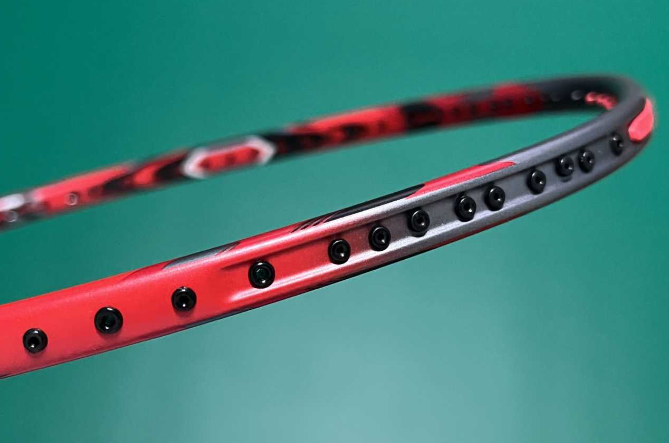


The ARC-11, on the other hand, has cable slots on the sides of the frame only from the 3 o’clock and 9 o’clock positions onwards, and in this respect the ARC-11PRO is designed differently.


In addition, the ARC-11PRO adopts a red peg with 8 lines of holes at the top of the frame, which is the same design as the AX-99PRO, but compared to the slight effect on the balance point, I think the most practical function of this long peg is to solve the problem of easy collapsing to a certain extent, which the ARC-11 had been criticised.
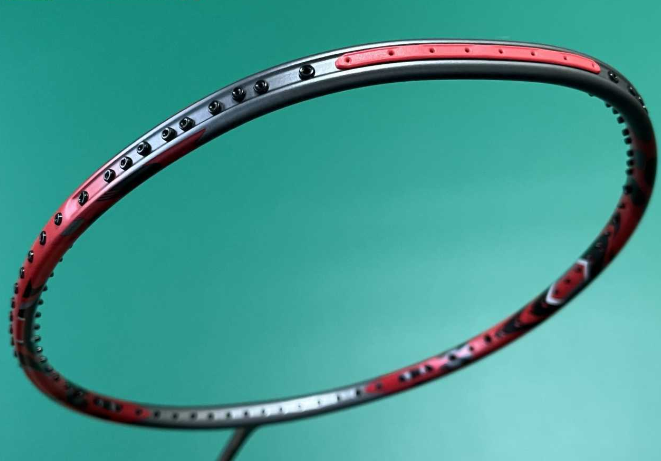

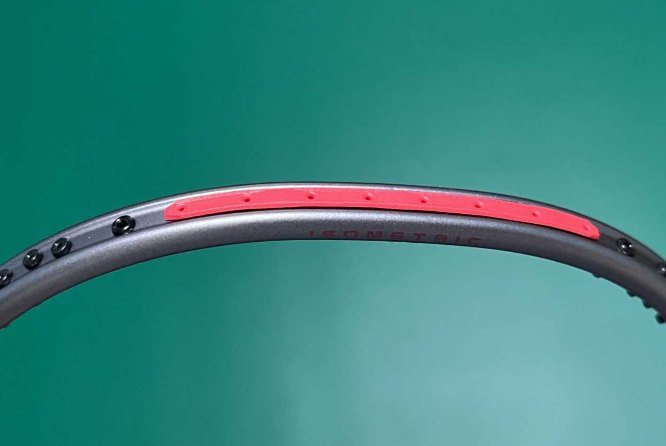

The ARC-11PRO has a traditional wooden handle with a fish mouth taper cap, and like the AX-100ZZ and AX-99PRO, it is an “E.B.CAP PLUS” design. As a result, compared to the ARC-11, the ARC-11PRO has an elongated cone, making it more comfortable and easier for the user to change the grip when using the upward leaning grip.



Another innovation in the ARC-11PRO, thanks to advances in materials and manufacturing processes, is the increase in warranty pounds to 28 pounds.
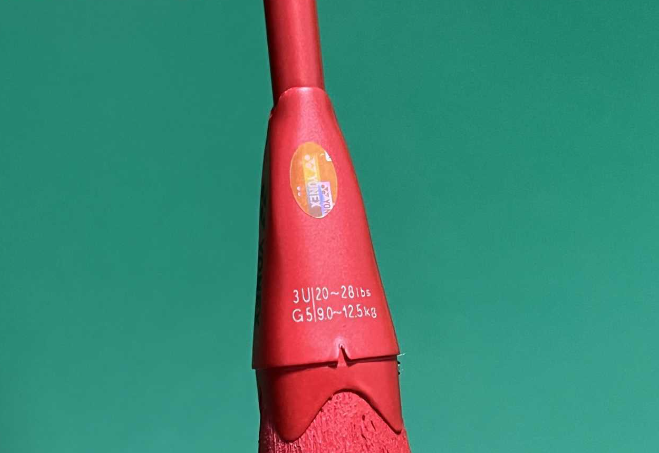
Overall, despite spanning a period of 9 years, the ARC-11PRO doesn’t just utilitarianly pile up the latest materials and technology as a new selling point, but rather maintains the original features of the Bow & Sword series while appropriately introducing new materials to amplify its original features and strengths. However, thanks to the advancement in technology, the ARC-11PRO has become slimmer and thinner in terms of the diameter of the centre pole and the thickness of the racket frame, which is a clear step up from the ARC-11 of 9 years ago.

Experience and practice: a familiar and unfamiliar reunion
On 25th May 2022, Oborisai revealed her new ARC-11PRO in a photo, and after exchanging questions with her about the new racket, I got my hands on the same ARC-11PRO with 3U/G5 specification, while the old ARC-11 in my hand, also with 3U/G5, has been accompanying me for many years, and it is just right to be the target of comparison for the feeling of playing in real battles. As the review process needs to be compared with the ARC-11, and the author’s hands of the ARC-11 after many years of use, the ability to withstand higher than the upper limit of the warranty poundage has been reduced, in order to be on the safe side, I gave the ARC-11PRO and the comparison object of the ARC-11 are put on the 24 lb NBG95 line.


High Distance Ball
Since its introduction, the ARC-11PRO’s predecessor, the ARC-11, has made its way into the bags of more and more players with its “sugary, easy-to-use” characteristics, and has become the perfect choice when recommending racquets to novices and beginners. The good news is that the ARC-11PRO has inherited this feature and amplified it to cater for more beginners. Thanks to its moderate balance point, even the 3U ARC-11PRO is not too difficult to handle. The softer and more flexible centre and frame not only make it easier to use the ARC-11PRO for lofted returns and whip shots, but also provide a more extreme feel, with fuller contact between the butt and the face bed, and a more solid hitting sensation. The ball is more solidly held, with fuller contact between the butt of the racket and the stringbed. At the same time, the enlarged sweet spot further improves the ARC-11PRO’s forgiveness, making it easier and more comfortable to hit high shots.

Hanging Balls
The initial experience of using the ARC-11PRO for hanging the ball is also very thick like the ARC-11, with a comfortable wrapping sensation that makes every shot feel right at home.
After careful comparison, due to the softer centre pole and frame of ARC-11PRO, the contact time between the wire bed and the ball head at the moment of hitting is longer, which means the characteristics of holding the ball are more obvious, achieving better control over the ball, and therefore it is easier to control the ball’s landing point. I invited a friend who had not used ARC-11 before to compare the two models, and after the same long adaptation time, he was able to hit the ball more close to the net with ARC-11PRO.
But obviously not all golfers like this extreme holding feeling of the ARC-11PRO, in the fast hanging which is about short release time, stealthy shot and fast ball speed, the ARC-11PRO has no advantage, compared to the ARC-11 it still seems to be a bit dry.
Passive Ball
The ARC-11PRO’s passive ball removal ability is the biggest highlight and the most useful feature of the ARC-11PRO in my opinion. The extremely flexible centre stick is not only easy to use in active returns, but also very comfortable in passive situations.
In the battle test, no matter it is forehand baseline or backhand baseline, even in the passive situation of hitting the ball at a lower point, it can return the ball to the backcourt. After switching back to the ARC-11, the feel of the ball is a bit harder. For example, when using the ARC-11PRO for backhand lobs, it is possible to achieve a high quality return on the spot, even to the bottom of the line; however, after switching back to the ARC-11, it is difficult to return the ball to the bottom of the line when using the same force, and it is necessary to adapt to the situation and then apply more force.
Therefore, when using the ARC-11PRO, even if the hitting point is relatively passive, there is no need to panic at all, as long as the full lead and complete the full force, can still be relatively easy to return the ball to the position, the more bouncy feeling of hitting the ball beyond the ARC-11, is the gospel of pulling and hanging the control type players.
Ball Killing
Another key feature of the ARC-11PRO is the enhanced ability to attack from the backcourt, while lowering the bar for hitting quality attacks. In the first use of the ARC-11PRO kill experience, the author’s first intuitive feeling is that the ARC-11PRO swing speed is very fast, and even have some speed racket feeling, especially in the point to kill such a short power shot, due to the faster than the ARC-11 swing speed, the first few balls, in the near completion of the wrist internal rotation flick the ball in fact has not yet landed to the right height, resulting in the ball hitting the head of the sweet spot, the ball is hit in the sweet spot. It took me some time to get used to the fact that the ball was hitting the top of the sweet spot or the top of the racket frame.
After adjusting to the ARC-11PRO’s swing speed and finding the right timing, I was able to experience the comfortable downward pressure and solid feel of the ARC-11PRO. Due to the soft middle shaft, ARC-11PRO is able to use the inertia of the racket head to “press” the ball and kill the ball with a sharp angle. Therefore, I believe that ARC-11PRO has lowered the threshold of high quality balls, and it is not difficult to manage, and the lower limit of the quality of the ball is guaranteed.
On this basis, the ARC-11PRO’s centre stick is not only soft, but also highly flexible, which can provide more powerful explosive power at the moment of hitting and gripping the racket, and kill heavier and more threatening balls, with a heavier killing ability than the ARC-11.
Overall, ARC-11PRO not only improves the lower limit of killing the ball, but also for advanced players with some offensive ability, ARC-11PRO also improves and improves the offensive ability compared to ARC-11, and it can be said that among the same type of balanced racquets that I have experienced, ARC-11PRO is one of the best in terms of killing ability.
Flat Shot
Before experiencing the ARC-11PRO, I saw that there was a saying among many players: “Compared with the upgrade of ARC-11, ARC-11PRO is more like a new work of the Blast series.” I have a different opinion about this statement. Admittedly, there is some truth in this statement, because the slimming down of the ARC-11PRO’s centre and frame makes it look and feel like the Speed series (mainly the NF-800), but there are some obvious differences in certain aspects or areas that the two are good at. The main difference is in the centre court, where the ARC-11PRO’s feedback on flat blocks is very different from that of the Splash series, and this is where the ARC-11PRO’s shortcomings are the most obvious.
Right off the bat, the ARC-11PRO has a noticeable stutter in flat blocks, which may be a negative effect of the softer, more flexible mid-stick. The ARC-11PRO’s mid-stick characteristics allow for excellent feedback on backcourt shots, solid ball striking, and good control, but it is not as good at small power shots such as mid-court flats, where there is a noticeable lag in the middle. In a flat draw, there is a noticeable lag in the centre stick, which, in layman’s terms, means that after hitting the ball, the centre stick feels like it’s taking a long time to rebound and vibrate back and forth. At the same time, the ARC-11PRO also lacks power on the ball, and the ball is soft and not hard.
And in speed-demanding sequential draws, the lack of a fast and crisp centre stick rebound makes it difficult to keep up with the fast pace when using the ARC-11PRO for flat draws.
The ARC-11 is also a much better flat driver, with a much stiffer centre, which makes it relatively quicker and more powerful, as well as being able to adapt to fast-paced matchups without dragging the ball around.
Overall, the soft centre is a double-edged sword, as it improves the feel of the backcourt power shots, but sacrifices some of the midcourt pressure and quickness. This characteristic of the ARC-11PRO can be said to be very different from that of the Blast series racquets. But furthermore, the ARC-11PRO is also very different from all previous Bowie racquets, and its overall feel can be described as completely new. If its predecessor, the ARC-11, gave an all-around, but not much of a standout impression, the ARC-11PRO is different, with a distinctive focus on the backcourt, and a slightly lesser feel in the frontcourt, which is considered a clear-cut pro and con.
Receiving/Defending
Firstly, the experience of flat draw blocking can be further extended to catching kills in doubles. In doubles, catching kills is generally based on backcourt and drawback, rarely using soft handling, so it requires a certain amount of power. The ARC-11PRO has very good body elasticity, so it’s still very easy to catch the ball back to the backcourt when defending, and the threshold for catching may be a little bit lower than the ARC-11. However, if you choose to return the ball with a flatter arc, or even a more difficult slice, it is not what the ARC-11PRO is good at, and you will still feel that the ball is not dry enough, and the feedback from the shot is not straightforward enough, so you don’t feel secure about the ball, and the ball’s route is a little bit different from what you expected when you slice it.
In singles play, where most of the kills are blocked at the net, the ARC-11PRO’s larger racket face and sweet spot improve forgiveness, while the frame’s better elasticity compensates to a certain extent for the feeling of unloading when hitting the ball in the non-sweet spot. So overall as long as the racket face is able to touch the ball, it is basically more comfortable to block the ball over the net, which is a friendly experience in defence and makes one more confident in defence when playing singles.
Spot Kill/Grab/Push/Interception/Flat High Balls
For singles players who like to win with speed, in practice, they will use more grab and push to organise the attack, and also combine some flat high balls to enrich the attacking line, the common point of these techniques is that they are small, hidden, and short in the process of power, I think there are pros and cons when using ARC-11PRO to perform these techniques.
Firstly, as mentioned earlier, the ARC-11PRO has a fast swing speed, so it is guaranteed for the ability to grab the ball when the opportunity arises for a quick strike. On the other hand, the ARC-11PRO’s lack of crisp feedback on short serves is also magnified at this point, which is commonly referred to as vibration, not a friendly feel, and difficulty in controlling the angle of the ball until it is fully adapted to it, as compared to the ARC-11’s stiffer and more precise shots.
Ball Before Net
At the net, for releases and hooks that don’t require a lot of power, the ARC-11PRO’s excellent ball retention requires only a little adaptation to the weight and flexibility of the ARC-11PRO to achieve good control.
For putting, the ARC-11PRO reveals the same drawbacks as in the flat draw, the stroke is not crisp enough, and you can still feel the obvious vibration in the middle of the club. However, after a certain period of adaptation, the quality of the ball and the control of the landing point are still gua

